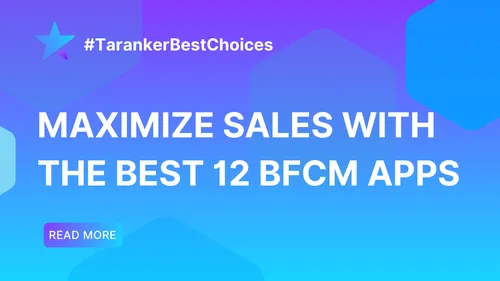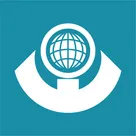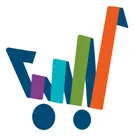As the global trade landscape evolves, print-on-demand (POD) businesses in the U.S. face new challenges with the prospect of rising tariffs in 2025. This guide is designed to equip POD entrepreneurs with strategies to navigate these tariff changes, ensuring long-term success and resilience. By understanding potential impacts and exploring diverse solutions, your business can thrive in an uncertain economic climate.
The landscape of international trade is shifting rapidly, with economic policies and tariffs frequently changing. For U.S. POD businesses, these changes represent both a challenge and an opportunity. The forecasted rise in tariffs in 2025 could impact costs and influence competitive pricing strategies, but with the right preparation, these challenges can be transformed into stepping stones for growth and resiliency.
Whether you're a seasoned POD veteran or new to the industry, being proactive is crucial. It involves not only adjusting to new tariff structures but also enhancing operational efficiency and exploring alternative markets. Drawing from industry insights and expert research, this guide will introduce you to effective strategies such as sourcing materials domestically, expanding product offerings, and leveraging technology to streamline operations.
For further information regarding tariff changes and trade policies, you can visit the U.S. International Trade Administration and the Office of the United States Trade Representative.
Understanding the Impact of Rising Tariffs on POD Businesses
- Cost Structures: With tariffs increasing, your production costs are likely to rise, affecting your overall cost structure. Adjusting your supply chain strategy could mitigate these effects. Forbes suggests exploring domestic suppliers or diversifying sourcing.
- Pricing Strategies: The additional costs due to tariffs must be carefully integrated into your pricing strategy. Keeping your prices competitive while maintaining profit margins is crucial. CNBC reports that some businesses are exploring volume discounts and loyalty programs as potential solutions.
- Profitability: Ultimately, tariffs can squeeze your profits if not properly managed. Monitoring tariff trends and staying informed through resources like Trade.gov can help you anticipate and adapt to changes effectively.
Understanding the ripple effects of tariffs can empower your POD business to adjust strategies proactively, ensuring resilience and continued growth despite international trade challenges.
Assessing Your Current Supply Chain: Where Do You Stand?
To position your POD business effectively against rising U.S. tariffs, it's crucial to assess your current supply chain meticulously. Begin with an evaluation of your material sources, understanding how increased tariffs might affect overall costs. This assessment involves:
- Mapping out every component of your supply chain to identify tariff-vulnerable areas.
- Exploring diverse suppliers to reduce dependency on any single source, demanding agility in switching to alternatives if tariffs rise.
- Staying informed with the latest updates from U.S. Department of Commerce on tariffs and global trade policies.
Understanding the global supply chain interconnectedness is vital for resilience, allowing you to proactively manage and mitigate potential tariff-related risks. By approaching these assessments systematically, you can safeguard your business and maintain competitiveness amidst fluctuating trade regulations.
Diversifying Suppliers: A Strategic Move
- In today's global market, diversifying suppliers can be a robust strategy to mitigate risks associated with rising U.S. tariffs. By engaging multiple suppliers, businesses can spread operational risks and ensure continuous supply even if tariffs impact some sources more than others.
- Exploring both domestic and international sourcing provides options to tap into untapped markets with potentially lower tariff implications. As reported by the, diversifying your supply chain not only minimizes risk but also potentially enhances negotiation leverage with suppliers.
- It's crucial to stay updated with any changes in trade policies and tariffs. Leveraging resources like the U.S. Census Bureau’s Foreign Trade Division can provide timely information that helps in decision-making.
Embracing Technology and Automation for Cost Efficiency
- Integrating advanced technology in print-on-demand (POD) businesses is essential to combat rising U.S. tariffs effectively.
- Automation can significantly reduce production costs. According to a TechCrunch article, companies leveraging automation report operational cost cuts by up to 30%.
- Investing in robotic printing solutions enhances precision and reduces material wastage, thereby increasing profitability.
- Utilizing data analytics helps in optimizing supply chain management. The Supply Chain Dive highlights data-driven strategies as pivotal in mitigating tariff impacts.
- Cloud-based software platforms boost collaboration and streamline workflow, leading to faster project turnarounds.
Adopting modern technologies not only helps absorb the financial shock but also positions your business for future growth. Balancing efficiency with innovation is key to thriving amid economic challenges.
Creating Tariff-Proof Product Pricing and Customer Communication
Creating Tariff-Proof Product Pricing and Customer Communication
- Analyze the financial impact of tariffs on your sales and adjust your pricing to cover these costs while minimizing the burden on customers. According to Trade.gov, it's crucial to remain competitive.
- Offer value through product bundling or exclusive deals to offset additional costs, fostering loyalty.
- Maintain transparency with your customers. Explain any price adjustments through clear, honest communication, building trust and understanding.
- Utilize digital tools like newsletters and social media to keep customers informed and engaged. The Business2Community suggests these platforms can enhance interaction and loyalty.
- Leverage customer feedback to refine your pricing strategies, ensuring they align with market expectations and your business goals.
Leveraging Expert Advice and Resources for Informed Decision Making
Navigating the complexities of rising tariffs calls for leveraging the guidance of industry veterans and tapping into comprehensive government resources. By collaborating with seasoned professionals and utilizing programs like the U.S. International Trade Administration, businesses can make informed decisions confidently. Staying updated through credible sources and networks ensures agility in response to policy changes.
- Engage with trade experts and advisors for personalized guidance.
- Utilize online platforms and forums dedicated to tariff updates.
- Keep abreast of news from reputable outlets like The Wall Street Journal.
- Participate in workshops or webinars offered by organizations like the Chamber of Commerce.
Through these strategic actions, your business will be better prepared to withstand and navigate the challenges presented by rising tariffs.
In the face of rising U.S. tariffs, POD businesses can ensure their survival by proactively adapting to changes with informed strategies and a flexible approach. By understanding impacts, diversifying supply chains, embracing technology, implementing effective pricing, and leveraging expert guidance, your business can turn challenges into opportunities for growth. Stay resilient and ensure your POD business thrives in the ever-evolving global market.
As we've discussed, the key to navigating the turbulent waters of rising tariffs lies in your preparedness and ability to adapt swiftly. First, understanding the full impact of these tariff changes on your cost structure is crucial. For more detailed analysis, the White House provides updates on trade policies that can help inform your decisions.
Next, take advantage of available technology to streamline your operations. Tools like automated inventory management and logistics software can significantly enhance efficiency. Explore options such as Alibaba’s cloud solutions to boost your tech infrastructure.
Diversifying your supply chain is another effective strategy. Seek partnerships with vendors from tariff-free regions to cushion the impact. Lastly, consider expert advice from industry consultants who specialize in international trade.
In conclusion, by adopting these strategies, your POD business can remain not just afloat, but thrive amid rising U.S. tariffs. Keep informed, be agile, and activate your business's potential for growth despite challenges. Adapt, innovate, and lead the way in the competitive marketplace.













